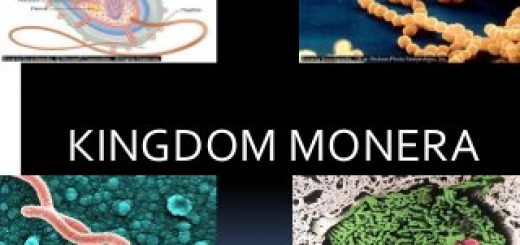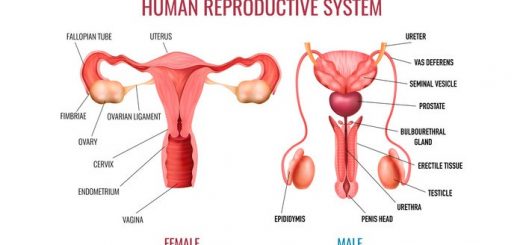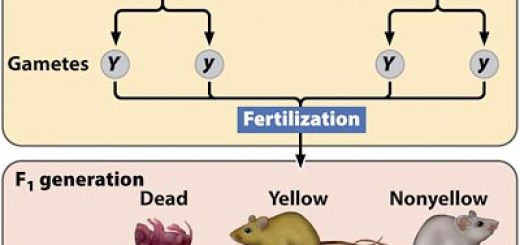Functions of Parasympathetic nervous system, Antagonistic and Synergistic effects
The parasympathetic division is also known as the craniosacral division of the autonomic nervous system because preganglionic neurons are located in several cranial nerve nuclei (III, VII, IX, and X) and in 2, 3, and 4 sacral spinal nerves. The parasympathetic ganglia are usually situated in or near the innervated organ so, the postganglionic fibers are short and the preganglionic fibers are long.
Functions of the parasympathetic outflow
I- The cranial autonomic
1. The Oculomotor (3rd cranial) nerve functions:
- Pupillary constriction (i.e. miosis).
- Accommodation for near vision can occur (Increased power of lens).
2. The Facial (7th cranial) nerve functions:
- Secretory and vasodilator to the lacrimal glands to cause shedding of tears.
- Secretory and vasodilator to the blood vessel of the nasopharyngeal glands and soft palate.
- Secretory and vasodilator to the sublingual and submaxillary salivary glands to give copious watery saliva rich in electrolytes.
- Vasodilatation of the blood vessels in the anterior 2/3 of the tongue.
3. The Glossopharyngeal (9th cranial) nerve functions:
- Secretory and vasodilator to the parotid salivary gland giving copious watery saliva rich in electrolytes.
- Vasodilator to the blood vessels of the posterior 1/3 of the tongue.
4.The Vagus (10th cranial) nerve:
The postganglionic fibers innervate the heart, lungs, gastrointestinal tract (the oesophagus, the stomach, and the entire small intestine, the proximal half of colon, liver, gall bladder, and pancreas).
1. Heart functions:
- Inhibition of all properties of the heart (contractility of the atria only, excitability, rhythmicity, and conductivity).
- Vasoconstriction of coronary vessels and reduction of the O2 consumption of the cardiac muscle.
2. Lungs function:
- Motor to the smooth muscles of the air passages leading to bronchoconstriction.
- Secretory to the bronchial mucous glands.
3.Gastrointestinal tract functions:
- Motor to the smooth muscles of the oesophagus, stomach, small intestine, and proximal half of large intestine but inhibitory to the sphincters.
- Secretion of gastric juice rich in HCL and enzymes.
- Secretion of pancreatic juice rich in enzymes.
- Secretion of insulin from the beta cells of the islets of Langerhans.
- Motor to the smooth muscle of the gall bladder and inhibitory to the sphincter. This effect helps the evacuation of bile.
II- The sacral autonomic
The preganglionic neurons of the sacral parasympathetic outflow originate in the second, third, and fourth sacral segments; axons from the pelvic nerve, which reaches the ganglia in the walls of the organs innervated. The postganglionic neurons supply the distal half of the colon and rectum, the urinary bladder and the external genitalia.
Functions:
- Motor to the wall of the distal half of the colon and rectum but inhibitory to the internal anal sphincter. It is the nerve of defecation.
- Motor to the wall of the urinary bladder, but inhibitory to the internal urethral sphincter. It is the nerve of micturition.
- Secretory to the seminal vesicles and prostate.
- Vasodilator to the blood vessels of the erectile tissue of the penis in males and that of the clitoris and vulva in females (these are the only vascular system in the pelvis that is supplied by parasympathetic). It is the nerve of erection. The external urethral and anal sphincters are skeletal muscles, therefore they are supplied by a somatic spinal nerve.
General functions of the parasympathetic system
- The parasympathetic division of the ANS is sometimes called the anabolic nervous system. It prepares the body for recovery and repair. Its activity continues and even increases during sleep and rest.
- In general, the functions promoted by the parasympathetic activity are those concerned with the vegetative aspects of day-to-day living e.g. parasympathetic action favors digestion and absorption of food by increasing the activity of the intestinal musculature, increasing gastric secretion, and relaxing the pyloric sphincter.
- It is to be noted that, in contrast with the sympathetic system, most control functions of the parasympathetic system are specific and localized e.g.:
- Parasympathetic cardiovascular reflexes usually act only on the heart to decrease its rate of beating.
- Other parasympathetic reflexes cause secretion mainly in month glands, whereas, in other instances secretion mainly in the stomach glands.
- Finally, the rectal emptying reflex does not affect other parts of the bowel to a major extent.
Organs with Dual Innervation
Most visceral organs receive dual innervation, they are innervated by both sympathetic and parasympathetic fibers. In this condition, the effects of the two divisions of the autonomic system may be antagonistic, complementary, or cooperative.
Antagonistic effects
The effects of sympathetic and parasympathetic innervation on:
- The pacemaker region of the heart, where stimulation of sympathetic fibers increases the heart rate, whereas the parasympathetic fibers stimulation decreases the heart rate.
- The digestive tract, where sympathetic nerves inhibit intestinal movements and secretions, while the parasympathetic nerves do the reverse.
Synergistic effects
- The effects are synergistic when sympathetic and parasympathetic stimulation produce similar effects as on salivary secretion.
- The secretion of watery saliva is stimulated by parasympathetic nerves, whereas sympathetic nerves stimulate the constriction of blood vessels throughout the digestive tract. The resultant decrease in blood flow to the salivary glands causes the production of a thicker, more viscous saliva.
Complementary effects
- The effects are complementary when sympathetic and parasympathetic stimulation produce different effects that work together to promote a single action as on the production system.
- Erection of the penis, for example, is due to vasodilation resulting from parasympathetic nerve stimulation, whereas ejaculation is due to stimulation of sympathetic nerves.
Organs without Dual Innervation
Although most organs receive dual innervation, some receive only sympathetic innervation. These include Sweat glands, Piloerector muscle, Blood vessels all over the body except the penis, Dilator muscle of eye pupil, Blood vessels of the skeletal muscles, Adrenal medulla, and capsule of the spleen.
In these cases, regulation is achieved by increases or decreases in the tone (firing rate) of the sympathetic fibers. For example, constriction of cutaneous blood vessels is produced by increased sympathetic activity that stimulates alpha-adrenergic receptors, and vasodilation results from decreased sympathetic nerve stimulation.
Organs that receive only parasympathetic supply
The lacrimal gland, Muscle for accommodation for near vision, and the nasopharyngeal gland.
Functions of Sympathetic nervous system & Role of the sympathetic in emergencies
Autonomic nervous system, Reflex action types & Autonomic ganglia function
Chemical transmission in Autonomic nervous system & Control of autonomic functions
Nervous system (Central nervous system, Peripheral nervous system & Autonomic nervous system)













